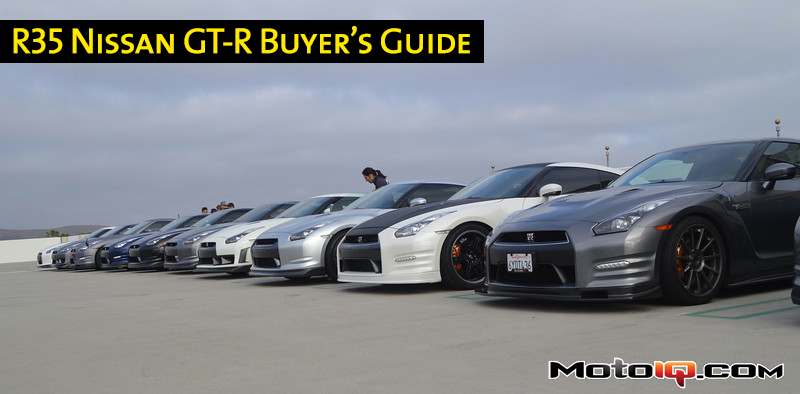?R35 Nissan GT-R Buyer’s Guide
Is the R35 Nissan GT-R a target car for the MotoIQ audience? Maybe and maybe not, but Project R35 GT-R says yes. The GT-R is not a manual shift, but rather a dual clutch gearboxed, V-6, twin turbo, 4000 lb beast. It's big, heavy, and extremely fast. How fast? The 2014 cars dip into the 2 second range for 0-60 mph and low 11 second quarter mile passes. The quarter mile not your thing? Then how about 7:18.6 for a lap around the Nurburgring? The thing about the GT-R is that it is easy to drive fast. An average driver in a GT-R is quick, but throw a fast guy in and they can seemingly defy physics. I have been covering the R35 GT-R since 2007, worked on a few of them here and there, and spent a couple years giving advice about the cars. I also have about 14 years of experience working with the Nissan Skyline GT-R. Everything from street cars to one that raced in the SCCA World Challenge GT series. This guide is an overview without getting too technical in any one area. Hopefully, it can help you out if you are looking at a car or have a friend looking into a car.

The Nissan Skyline GT-R has a long history in Japan, but the R35 (Nissan GT-R) is going to be our focus. Since 2008 there have been 7,376 GT-Rs sold in the US (July 2014). Worldwide sales figures put the numbers around 15,000 units, based on the data I have seen. In comparison, last month alone Nissan sold about 21,000 Altimas in the US. A Nissan GT-R is not an Altima. Selling the car at a Nissan dealer has been a bit of a blessing and a curse here in the US. The dealer network needs to be certified, and they must have special equipment in order to sell and work on the Nissan GT-R. This means the dealers that do sell them have a tendency to add a “market adjustment” to the price of the cars. The 2013 Nissan GT-R Black Edition is the first Nissan to MSRP in the six figure range in the US. The buyers expect better treatment than an Altima buyer, but they often feel that they do not get it.
MSRP from 2009 up.
2009 Base | $69,850 |
2009 Premium | $71,900 |
2009 Late Base | $76,840 |
2009 Late Premium | $79,090 |
2010 Base | $80,790 |
2010 Premium | $83,040 |
2011 Premium | $84,060 |
2012 Premium | $89,950 |
2012 Black Edition | $95,100 |
2013 Premium | $96,820 |
2013 Black Edition | $106,320 |
2014 Premium | $99,590 |
2014 Black Edition | $109,300 |
2014 Track Edition | $115,710 |
+$1000 Destination and Handling
+$3000 Super Silver Paint
The steady increase in the base price has helped and hurt. It has hurt buyers and helped sellers since the Nissan GT-R’s resale value remains strong as a result of the cost creep. Most 2009-2010 cars still trade hands in the $60-$70k range. If they are much less than that expect to find either a ton of miles or some other issue. The Prince of Nigeria will probably not sell you his GT-R for $15,000 if you Western Union him a deposit, so watch out for those oddball Craigslist ads.

A GT-R is a Nissan, but it is a high performance Nissan. It is a 195 mph Nissan. It's not a joke of a car. If there were any errs in the beginning of this car they were in the areas of safety margin. The transmission, the brakes, the tires, the engine, and the tune were all pretty conservative. There have been some failures and a few of them are very well documented. With that said, each year the GT-R has seen some upgrades. This guide will breakdown those changes in detail. It will also cover the quirks and nuances unique the GT-R as well as focus on addressing the truth behind the wider known failure points.




